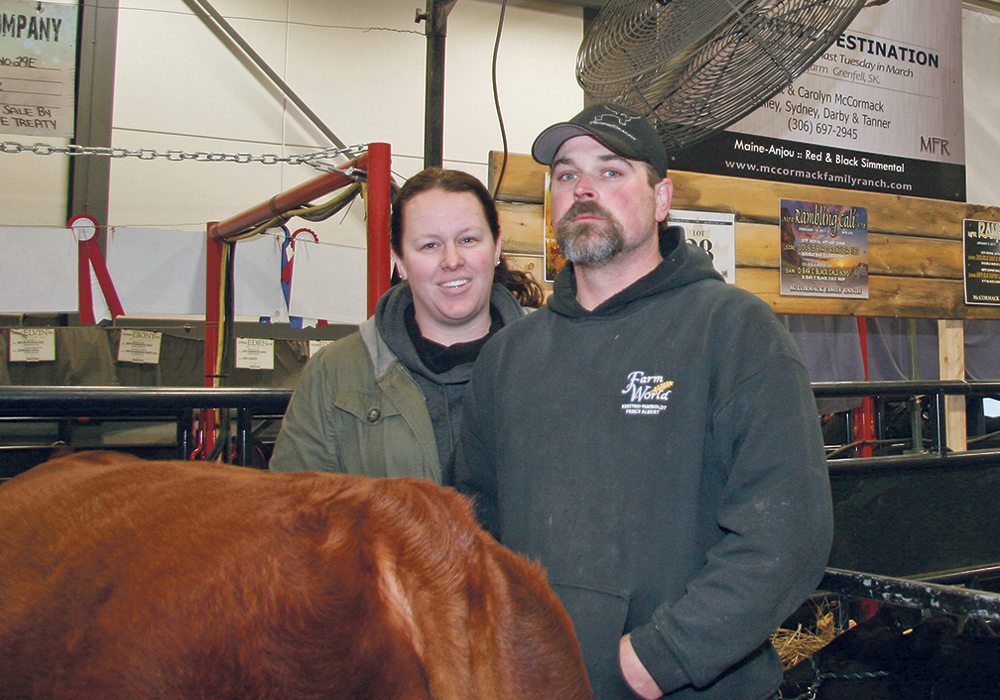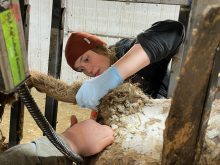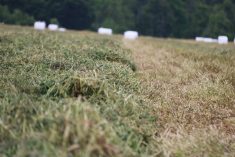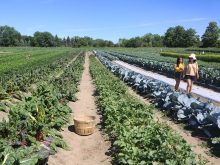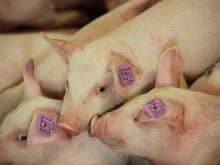REGINA — Darrel and Jenna Timm are new generation Simmental breeders.
The young couple from Kinistino, Sask., have been together since 2004 and they wanted to be in-volved in the beef business from the start. Jenna had purebred experience and Darrel knew commercial cattle.
Now their two children, Ava, 6, and Jace, 4, are getting bigger so the entire family can participate in shows like Canadian Western Agribition as well as youth events.
They raise about 75 purebreds and some commercial cattle and grow grain at their farm in north-central Saskatchewan.
Read Also
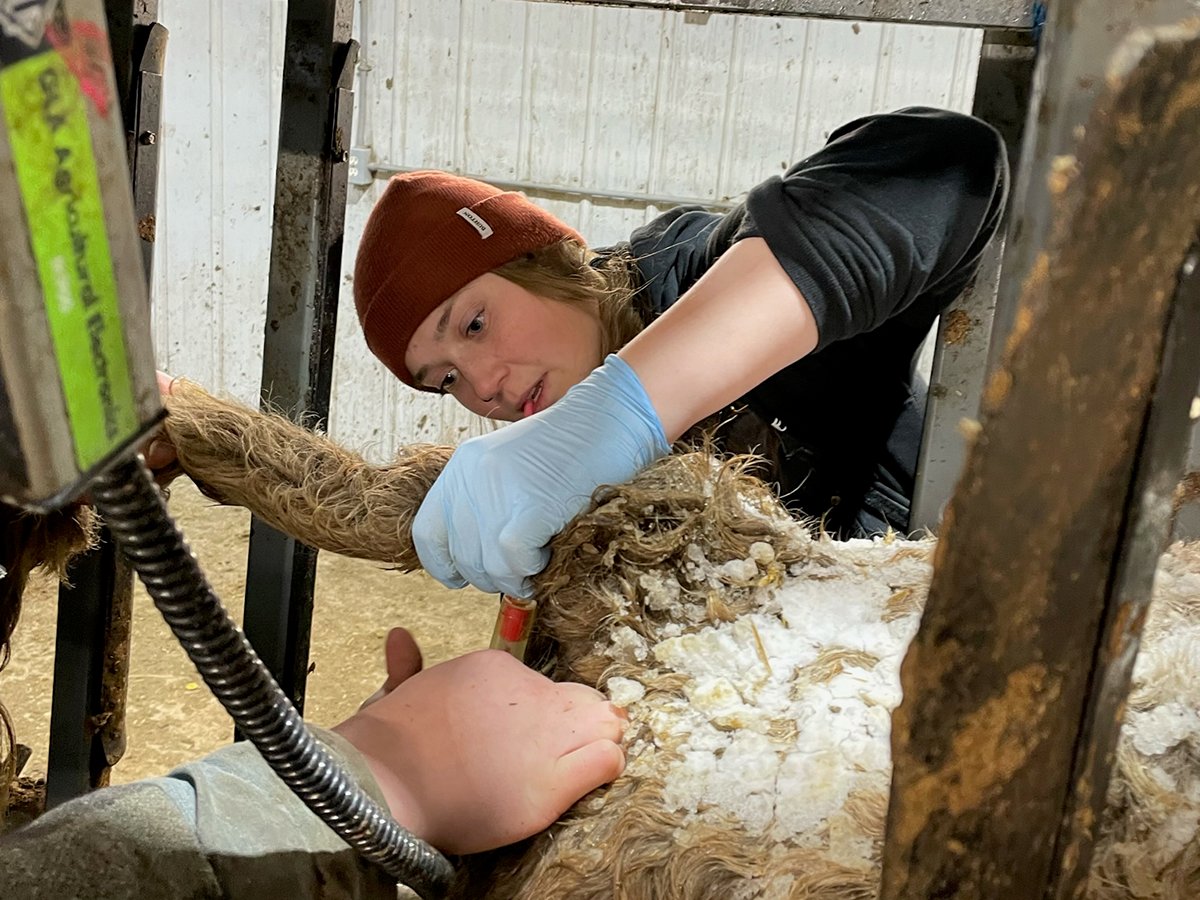
Pen riders better than tech at detecting respiratory disease in feedlot cattle, says researcher
Katrina Garneau’s recent research found that pen riders are better than technology at flagging signs of BRD in feedlot cattle.
Big events like Agribition are not only competitions but also marketing events.
“The more exposure you get coming to shows like this obviously draws a bigger circle,” Darrel said.
They had not entered the show while their children were babies. This year they showed in the middle of the classes and were satisfied with that.
“We did not set our expectations high when we come here, and we were happy with how we did,” Jenna said.
They learn from the shows and talk to more experienced breeders about how they arrived at their levels of success.
“Everybody’s herd is a little different, but it helps to know you are on the right track,” Darrel said.
“There are lots of guys in the breed who are not scared to tell you how they did it or how they struggled or where they succeeded.”
The common denominator is these are family businesses, and the Timms want their children to have the same experience.
Beyond the show ring, their goal is to raise sound purebred cattle with plans to expand by retaining more of their own heifers.
The quality of the breed encourages Jenna to stay with it, and Darrel likes the marketing opportunities.
He thinks like a commercial producer who wants big weaning weights and easy to manage cows.
“They have got to have easy keeping cows because they have to work for you at the end of the day,” he said.
“We are always looking at different ways to market cattle and utilize the purebreds the best we can.”
They sell their bulls as yearlings by private treaty and try to build them around what their commercial customers tell them they need. Most want easy calving or may be looking for a type that can handle local conditions.
“When it comes for us buying herd bulls, we just have to look for what is working in our herd,” she said.
Running a modern farm is hard work, and the husband and wife need to be a team.
“The roles of women are changing, and we are more hands on in the barn,” she said.
Added Darrel: “If you weren’t a team, it would be hard to make it work.”
They start calving Jan. 1 because they want the bulls grown by the end of the year so they can start work the next spring.
They have also been through some hard times by starting out just after a BSE diagnosis collapsed the cattle markets and later an anthrax outbreak in their area had them worried. They have lived through floods and serious drought.
There were years when they held onto the cows to pull them through the tough times.
They are not entirely on their own. Darrel’s family knew commercial cattle, and Jenna is the daughter of Bruce Holmquist, general manager of the Canadian Simmental Association.
He got the family started in the business when he bought a heifer at Agribition in 1976. He was 15 years old and paid $2,200 to own a white and tan female for a 4-H project.
That female was an entry into the purebred business, and it became part of the foundation of the family’s herd.
Over the years the family watched the breed gain in popularity, and it is now Canada’s second largest breed in terms of purebred registrations. The breed is celebrating its 50th anniversary in Canada this year.
Holmquist became a director with the Canadian Simmental Association in 2000 and sat on the board for six years. In 2007 he was approached to fill a position, and he eventually became chief executive officer of the association in 2012.
European cattle were called exotic when they arrived in Canada, but Simmentals are now mainstream, including a good relationship with the Angus industry, where crossbred Sim-Angus cows are common.
The breed also wanted continuous improvement. The association received a $3.2 million grant from the federal and Saskatchewan governments and association funding to genetically evaluate Simmental.
The result is the beginning of genomically enhanced expected progeny differences to help producers select the cattle that fit their programs best.
“Early adopters will take advantage of being first,” Holmquist said.
Science will play a larger part in the industry, and he sees it as a way to add value to the breed and move it forward. Using DNA, they are able to track qualities such as residual feed intake, meat quality and stayability, in which a cow stays in production for as long as possible.
Some of the work from the genetics project led to a new model on fertility evaluation, which is being adopted by the North American Simmental industry.
Ultimately these enhanced predictions should be reflected through data collected on the bulls for a more informed buying decision.
Fertility is number one, but producers also need sustainable animals that grow faster, consume less feed and release fewer greenhouse gas emissions, Holmquist said.


